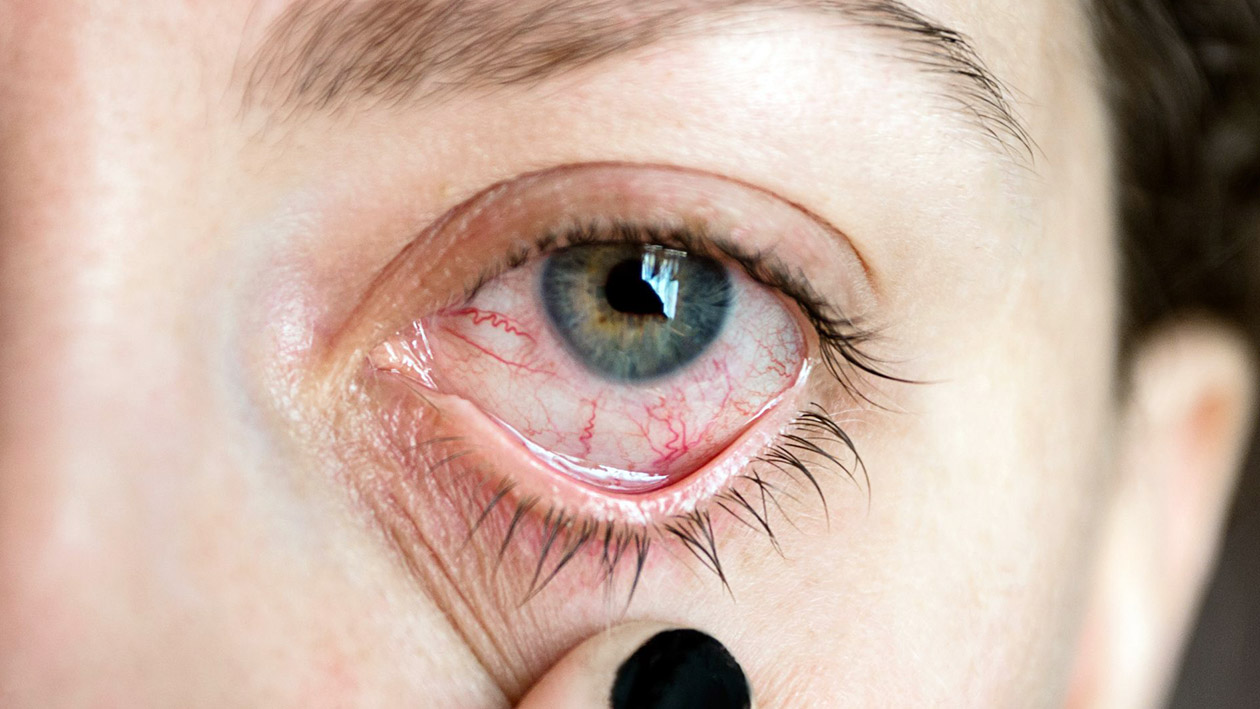What is Uveitis?
Uveitis is a group of inflammatory conditions affecting the uvea, the middle layer of the eye. This layer consists of the iris, ciliary body, and choroid, crucial for various eye functions, including light absorption and focusing.
What are the different types of Uveitis?
Uveitis is classified into four main types based on the primary location of inflammation in the eye:
Anterior Uveitis
Anterior uveitis, also known as iritis or iridocyclitis, affects the front part of the eye, including the iris and ciliary body. It is the most common form of uveitis, accounting for 30-90% of all cases. Symptoms typically include eye pain, redness, blurred vision, and light sensitivity.
Intermediate Uveitis
Intermediate uveitis, also called cyclitis, pars planitis, or vitritis, involves inflammation of the vitreous gel in the middle of the eye. It is the least common type, affecting only 1-12% of uveitis cases. Symptoms often include floaters and blurry vision, but it is usually not associated with pain.
Posterior Uveitis
Posterior uveitis affects the back of the eye, including the choroid, retina, and optic nerve. It accounts for 5-30% of uveitis cases. This type is often chronic and can cause vision loss. Symptoms may include floaters and visual disturbances, but it can only be detected during an eye examination.
Panuveitis
Panuveitis involves inflammation of the entire uvea, affecting all layers of the eye from front to back. It is the most serious form of uveitis, making up 1-9% of cases. Symptoms can include floaters, blurred vision, and potential vision loss.
These classifications help guide diagnosis and treatment approaches for uveitis patients.
What are the symptoms of Uveitis?
Uveitis can present with various symptoms, which may develop suddenly or gradually. The most common symptoms of uveitis include:
Visual Symptoms
- Blurred vision: This is a frequent symptom across all types of uveitis.
- Floaters: These are dark spots or squiggly lines that float across your vision.
- Light sensitivity (photophobia): Discomfort or pain when exposed to bright light.
- Vision changes: This can include decreased vision or distorted vision.
Eye Discomfort
- Eye pain: This is a common symptom, especially in anterior uveitis.
- Eye redness: The affected eye(s) may appear red or inflamed.
Other Symptoms
- Small or distorted pupil: This can occur in some cases of uveitis.
- Pain when moving the eye or focusing on near objects: This symptom is more specific to certain types of uveitis.
It’s important to note that uveitis can affect one eye or both eyes simultaneously. The onset of symptoms can be acute (developing quickly over hours or days) or chronic (developing slowly over weeks or months).
Symptoms by Type of Uveitis
- Anterior uveitis: Typically causes eye pain, redness, light sensitivity, and blurred vision.
- Intermediate uveitis: Often presents with blurred vision and floaters, but usually doesn’t cause pain.
- Posterior uveitis: May cause vision loss and symptoms like flashing lights or floaters.
- Panuveitis: Can involve any combination of the symptoms mentioned above.
If you experience sudden eye pain, redness, light sensitivity, or changes in vision, it’s crucial to seek medical attention promptly. Early diagnosis and treatment of uveitis are essential to prevent potential complications such as vision loss.

What causes Uveitis?
The exact cause of uveitis is often unclear but it is believed a variety of factors can instigate the inflammation that characterises uveitis.
Autoimmune Disorders
Autoimmune disorders often precipitate uveitis by prompting the body’s immune system to mistakenly attack its own eye tissue. Examples of such disorders include rheumatoid arthritis, sarcoidosis, and ankylosing spondylitis. These conditions involve systemic inflammation, which can extend to the uvea.
Infection-Related Uveitis
Bacterial, viral, parasitic, and fungal infections can induce uveitis. Pathogens like herpes viruses, Toxoplasma gondii, and tuberculosis bacteria have all been associated with infection-related uveitis. The body’s response to eradicate these infections can inadvertently cause inflammation in the eye.
Injury-Related Inflammation
Physical trauma to the eye may also result in uveitis. Injuries disrupt the eye’s normal structure, leading to inflammation as part of the healing process. Blunt force trauma or penetrating injuries can leave the eye vulnerable to inflammation and subsequent uveitis.
Cancer-Associated Uveitis
Occasionally, uveitis can signal the presence of cancer within the body, a condition known as masquerade syndrome. Lymphomas and other malignancies might manifest with ocular inflammation, imitating the symptoms of uveitis. In such cases, cancer cells or related immune responses are the culprits behind the inflammation.
Idiopathic: When the Cause Remains Unknown
A significant number of uveitis cases are labelled idiopathic, meaning their cause cannot be identified. Even with substantial medical investigations, the trigger for uveitis in these instances remains elusive. Idiopathic uveitis challenges clinicians and researchers alike, emphasizing the need for personalised patient care and continuous research.
Diagnosis and Treatment
Diagnosis and treatment of uveitis involve a comprehensive approach to identify the underlying cause and manage inflammation effectively.
Diagnosis
Uveitis is primarily diagnosed through a thorough eye examination, including:
- Visual acuity assessment
- Intraocular pressure measurement
- Slit lamp examination
- Ophthalmoscopy with dilated pupils
Additional diagnostic tests may include:
- Colour photography of the retina
- Optical coherence tomography (OCT) imaging
- Fluorescein angiography or indocyanine green angiography
- Analysis of aqueous or vitreous fluid
- Blood tests
- Imaging tests (radiography, CT, or MRI scans)
In some cases, a multidisciplinary approach involving ophthalmologists, rheumatologists, and other specialists may be necessary to determine the underlying cause.
Treatment
The primary goal of uveitis treatment is to control inflammation and prevent vision loss. Treatment options include:
Medications
- Corticosteroids: The first-line treatment for non-infectious uveitis, administered through various routes:
- Topical eye drops
- Periocular injections
- Intravitreal injections or implants
- Systemic (oral or intravenous)
- Immunosuppressive agents: Used to minimise corticosteroid use and manage chronic cases
- Biologics: Newer treatments for refractory cases
- Antibiotics: Used in cases of infectious uveitis
Adjuvant Therapies
- Cycloplegics
- Nonsteroidal anti-inflammatory drugs (NSAIDs)
- Anti-vascular endothelial growth factor (anti-VEGF) therapy
Surgical Interventions
- Vitrectomy to remove inflammatory debris
- Implantation of slow-release medication devices
Treatment strategies are tailored to the specific type of uveitis, its severity, and underlying cause. Regular follow-ups and monitoring are essential to assess treatment efficacy and manage potential complications.
How common is Uveitis in Australia?
Uveitis is relatively uncommon in Australia, with recent studies providing specific incidence and prevalence rates:
- Incidence: The incidence of uveitis in urban Australia is approximately 21.54 per 100,000 person-years.
- Prevalence: The period prevalence of uveitis is about 36.27 per 100,000 persons.
For anterior uveitis specifically:
- Incidence: 16.57 per 100,000 person-years
- Annual prevalence: 25.94 per 100,000 persons
The distribution of uveitis cases by anatomical location is:
- Anterior uveitis: 75%
- Intermediate uveitis: 6%
- Posterior uveitis: 15%
- Panuveitis: 4%1
These figures suggest that uveitis rates in Australia are lower compared to some other countries. For context, worldwide incidence of uveitis ranges from 17-52 per 100,000 person-years, while prevalence ranges from 38-714 cases per 100,000 people.
It’s worth noting that uveitis is the third leading cause of irreversible blindness worldwide, despite its relatively low incidence.
Importance of Regular Eye Examinations
Living with uveitis requires vigilance, and regular eye exams are crucial for optimal management. These exams are not just beneficial, they’re essential for preserving your vision. They allow ophthalmologists to closely monitor your condition, detect subtle changes, and adjust treatment proactively, preventing potential complications.
Regular appointments significantly reduce the risk of uveitis-related complications. Early detection of potential issues, such as increased intraocular pressure or cataract development, allows for timely intervention. Whether through medication adjustments or surgery, prompt treatment can prevent irreversible damage and preserve your vision.
The frequency of your eye exams will depend on the severity and activity of your uveitis. During active inflammation, visits may be needed every few weeks. During periods of remission, the interval can be extended. Working closely with your optometrist or ophthalmologist, you’ll develop a personalised follow-up schedule tailored to your specific needs.
BOOK AN APPOINTMENT TODAY
Tired of squinting and straining? Experience the comfort and clarity of healthy vision.
